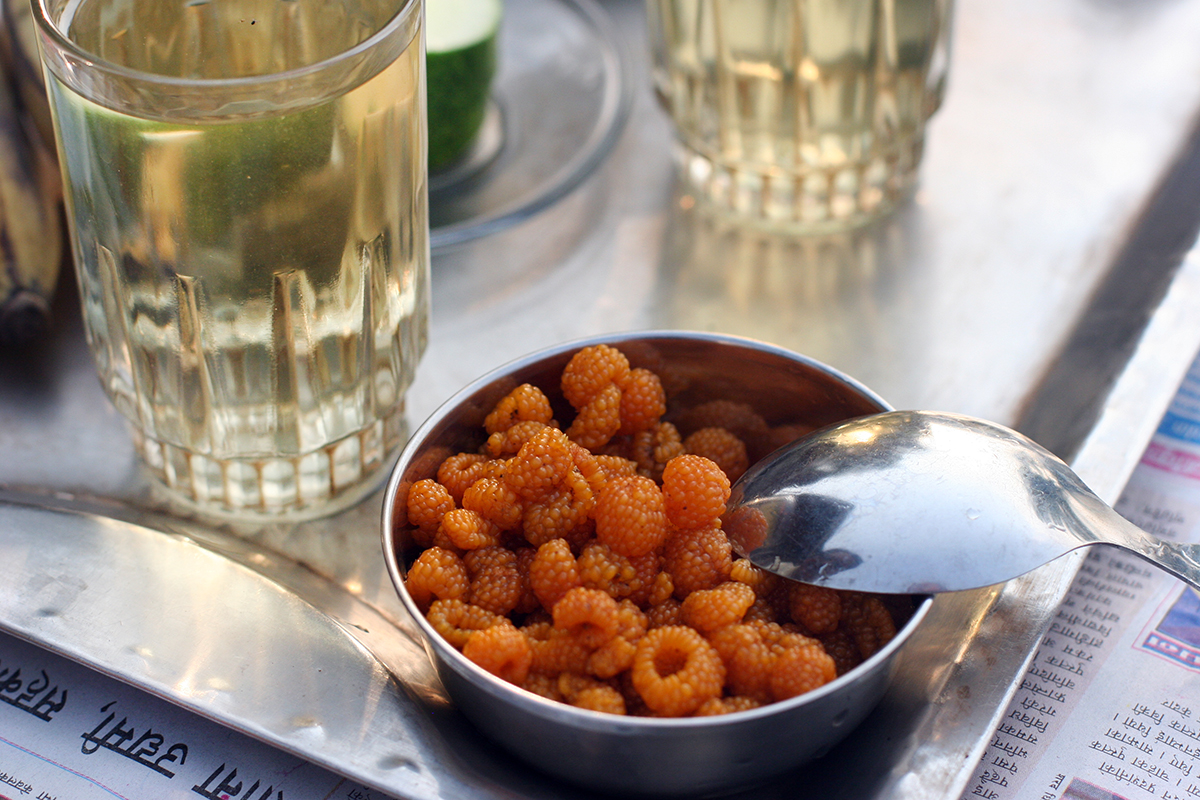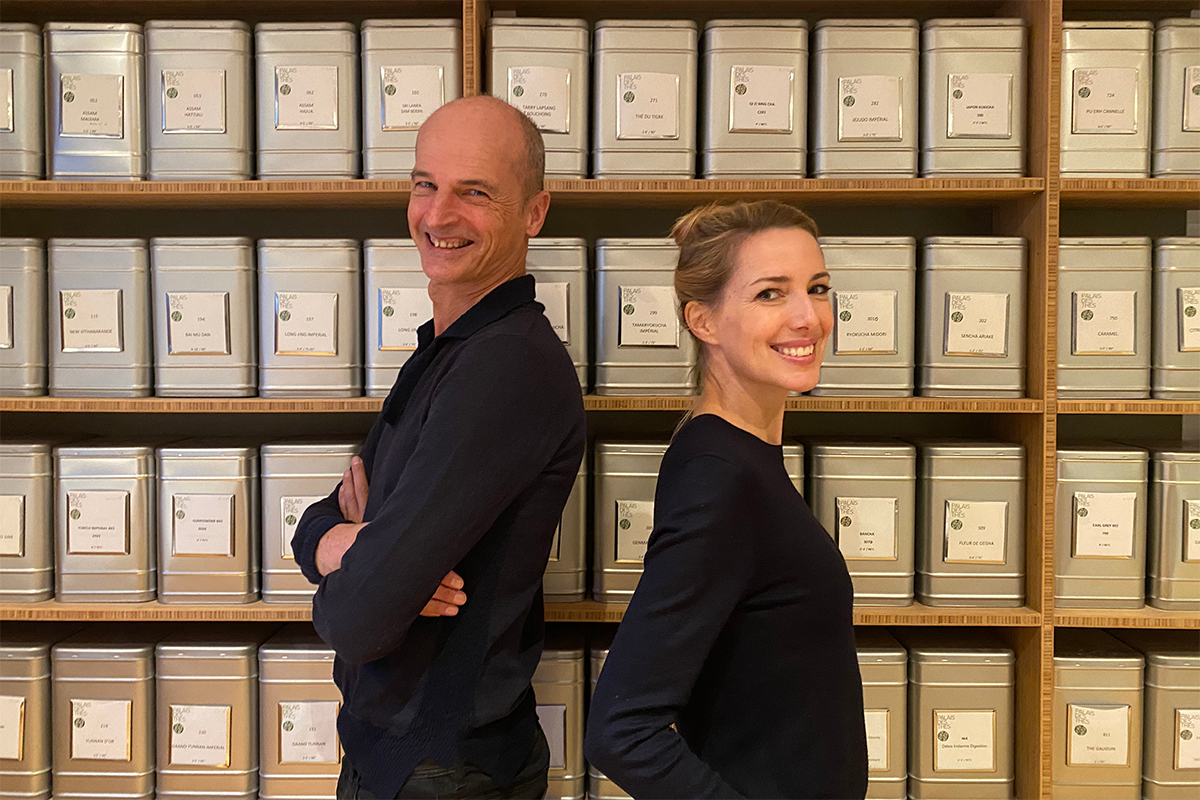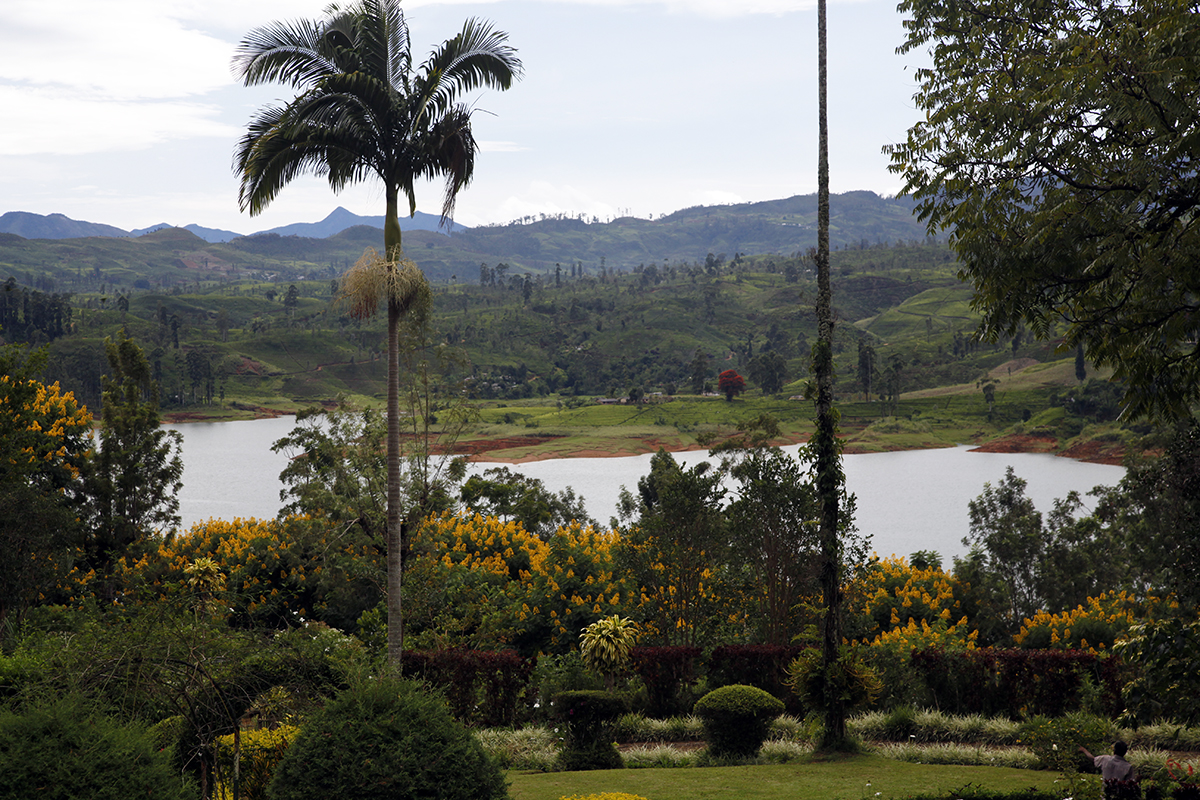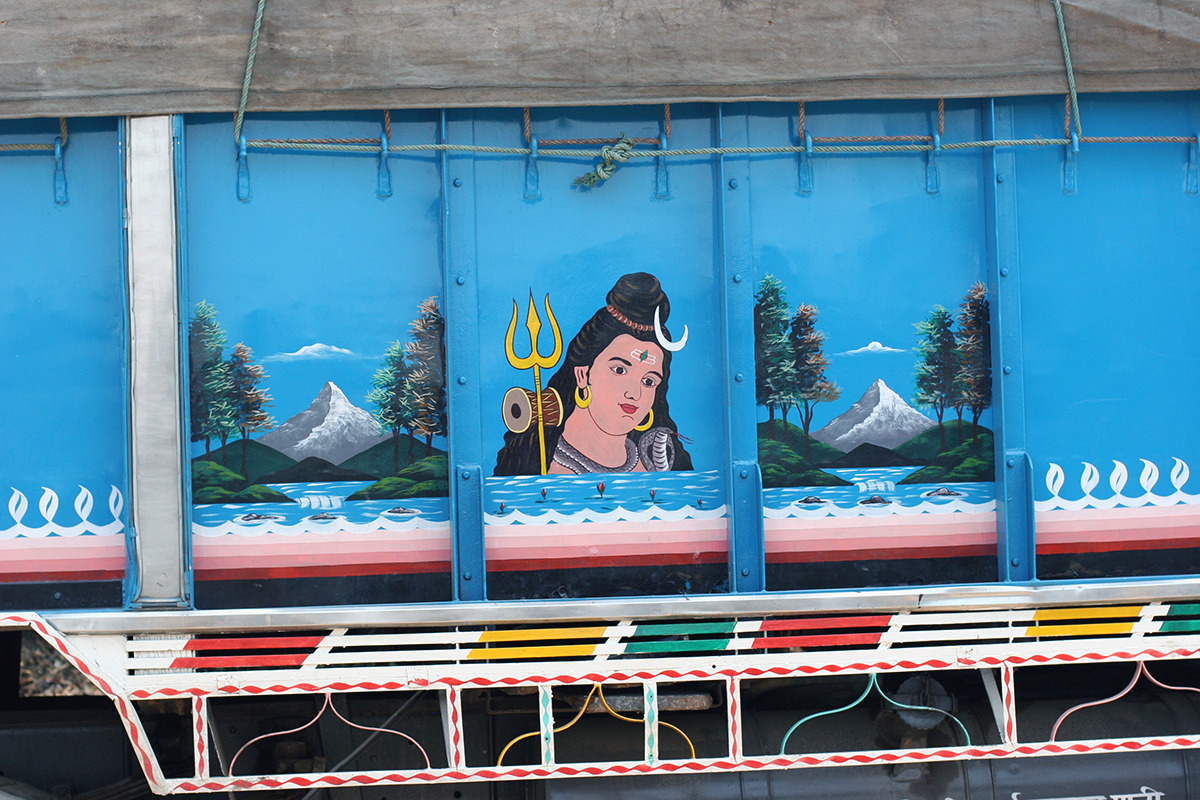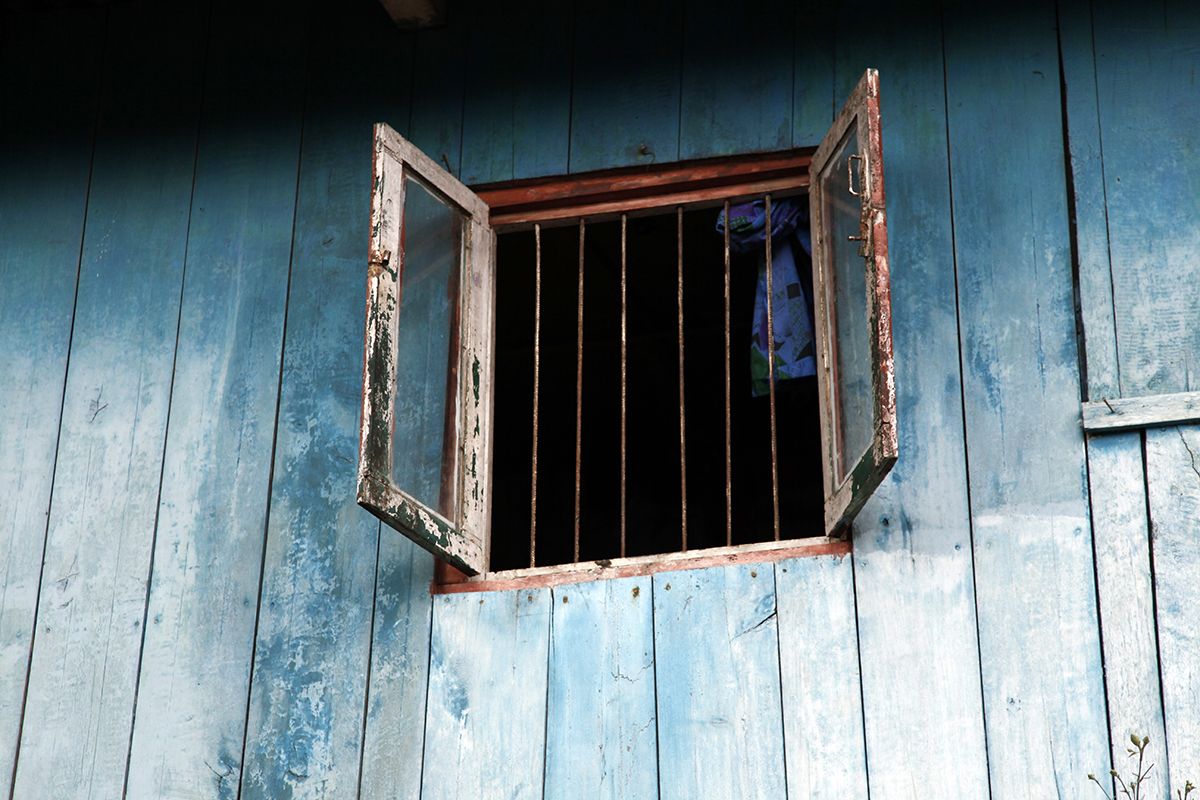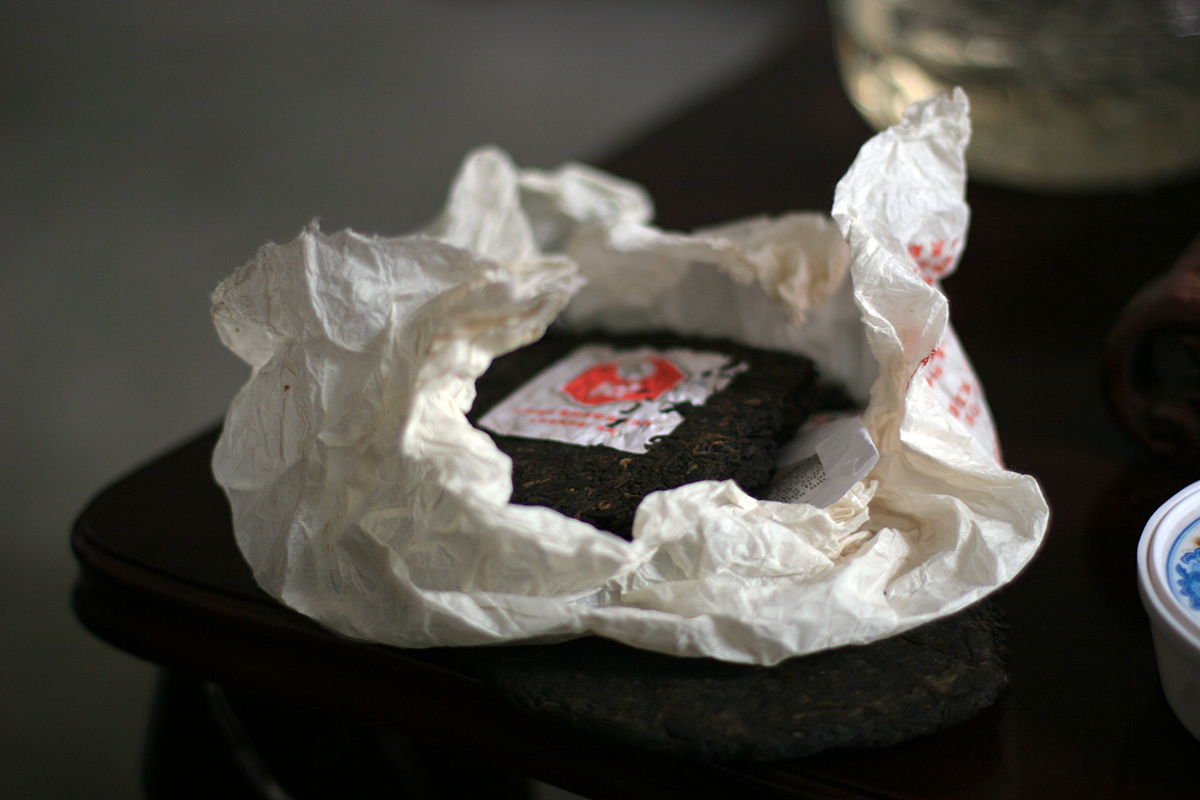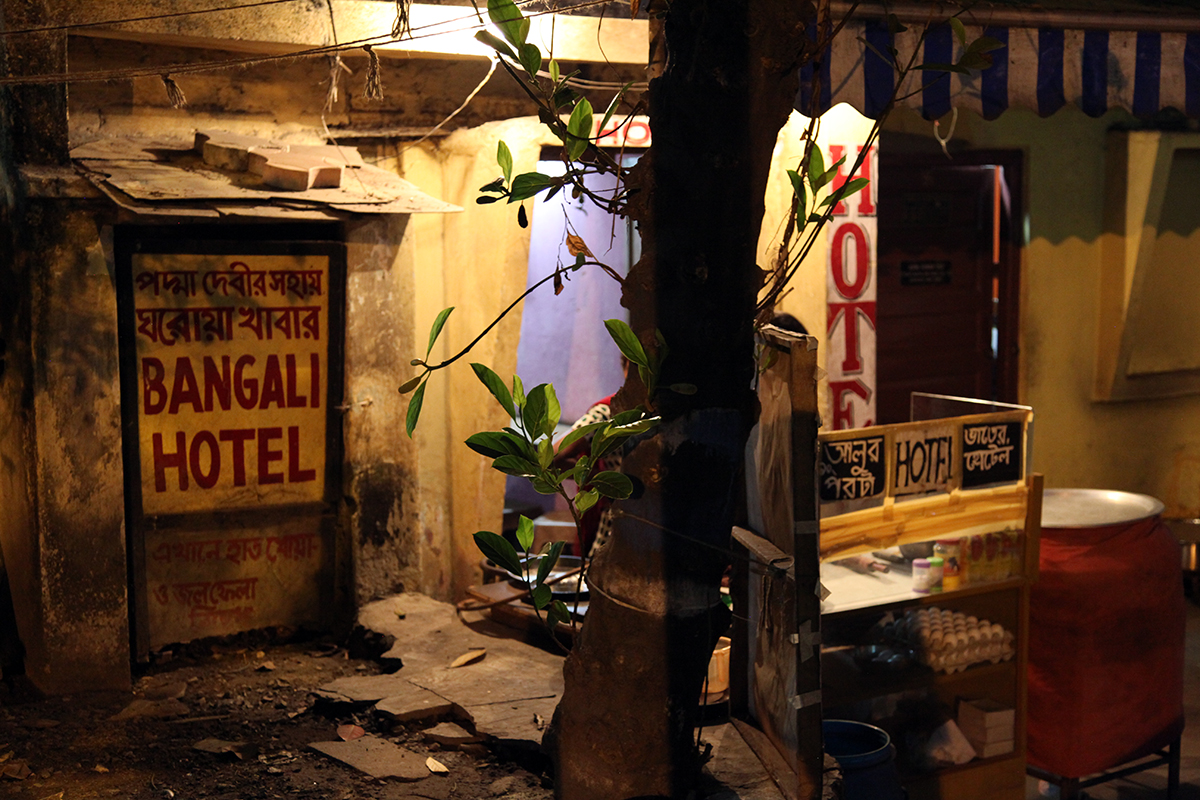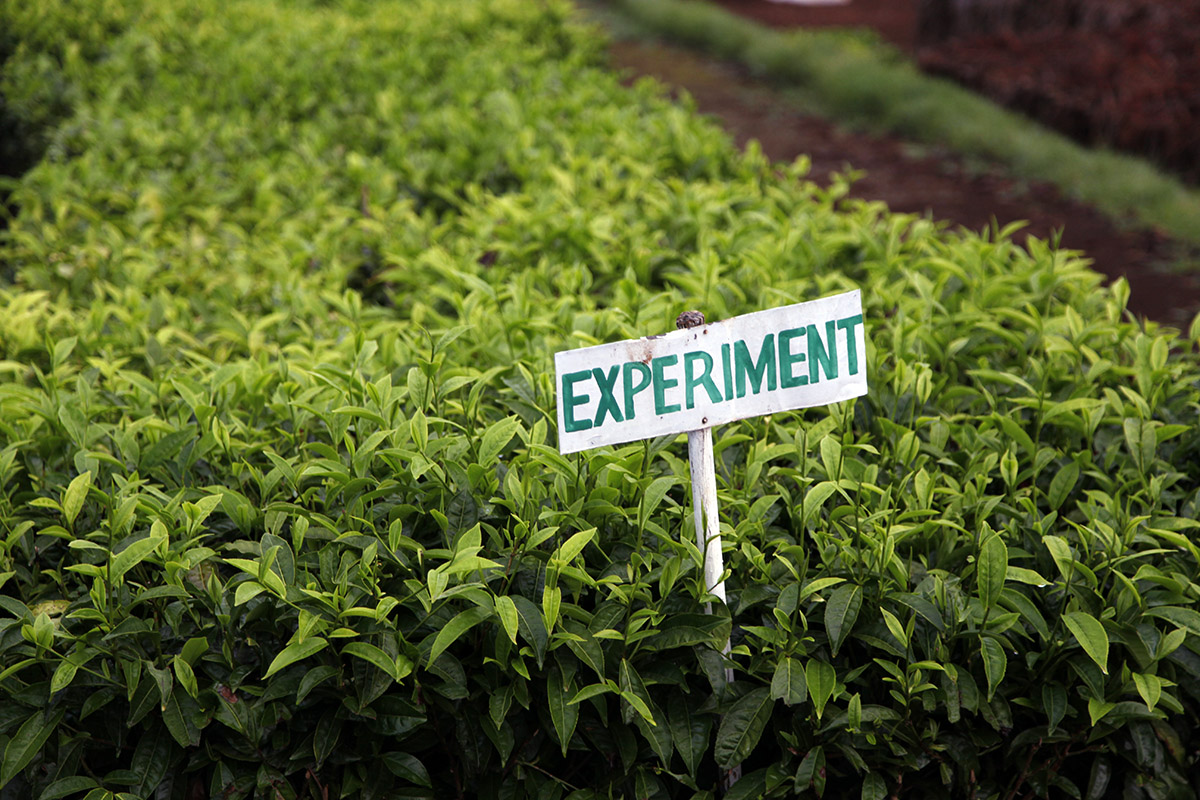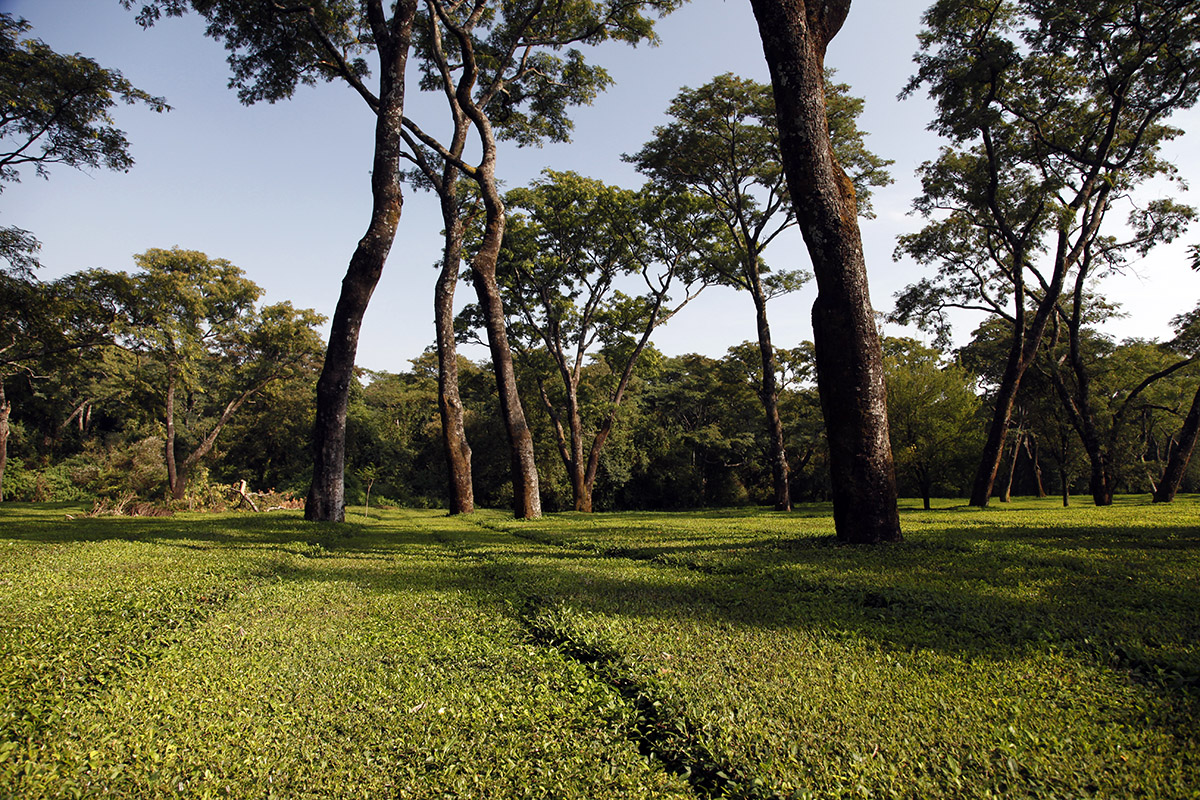People are always experimenting, and when you’re lucky enough to be a tea researcher, you’re well placed to see all sorts of things. Here, on a coffee plantation in Tanzania that has branched out into growing tea, there is no lack of innovation. The latest initiative is to remove the flesh of papayas and fill the skins with a semi-oxidised tea that has been withered and rolled. After a short oxidation, the wet leaves are stuffed into the hollowed-out ripe fruit and become impregnated with its delicious scent.
ARCHIVE FOR 2020
Accompany your tea
Lots of things are used to accompany tea. In some countries people add mint, spices, milk or sugar to the teapot, or directly in the cup. There are many different customs. In other countries, people serve marbled quail eggs or seeds alongside their brew, or a cardamom pod, held in the mouth while drinking, like they do in Afghanistan. It gives the tea a delicate flavour. Here, in Ilam Valley in Nepal, these golden Himalayan raspberries add a touch of sweetness to the delicious green tea produced in the surrounding hills.
Travels with tea
I met Sidonie when she invited me to be on her RTL radio show. That was a few years ago. We stayed in touch and, after chatting over a cup of tea one day, we thought, why not? Why not combine our passions and take our listeners, tea enthusiasts, on a journey to their favourite tea-producing country? This idea led us to launch a new podcast, or balado, as our Quebecois friends would say.
Join us at https://www.palaisdesthes.com/fr/podcast/ and on your usual podcast platform. These tales of travels and tea are for you. (In French only.)
Around Maskeliya Lake
Would you like to come for a walk with me around Maskeliya Lake in Sri Lanka? Here, we’re halfway between the high-grown and low-grown teas; between those from the mountains of the Nuwara Eliya region and the often-remarkable teas produced in the jungle around Sinharaja forest further south. This is the view from the front of the bungalow on the Moray Tea Estate. The artificial Maskeliya Lake is surrounded by tea plants and the magnificent flora particular to this region, including flamboyant cassia and poinsettia. The yellow and red brighten up the eternal green of our camellias.
Comprehensive insurance
If the Indian gods could come to our rescue in this fight against Covid-19, I would implore them to do so immediately. As an offering, I would place their weight in tea at their feet. In India, where there are many gods, religion is everywhere, even on the sides of trucks, which drivers paint with the god under whose protection they place themselves. This provides valuable insurance in a country in which road safety rules – where they exist – are not always shared.
The world through the window
In these times of Covid-19, the tea researcher looks at the world through his window. Deprived of travel, he consoles himself by tasting the teas he continues to receive from different plantations, and sometimes selects one.
In these times of Covid-19, the tea researcher dreams of his future trips, the people he’ll meet, the things he’ll discover. And so he divides his time between these two occupations, tasting and dreaming.
A walk in the woods
During lockdown, it can be easy to let ourselves go a bit. We might exercise less and put on weight. Could this be a good time to turn to tea? According to traditional Chinese medicine, one of the many properties attributed to our beloved Camellia sinensis is fat-burning. This remarkable quality is particularly true of dark teas, called Pu Erhs, with their powerful notes of undergrowth and humus. If you can’t take a walk in the woods, you can at least enjoy all the associated aromas in your cup – alongside those other supposed benefits.
Dilapidated
I chose this photo today not to illustrate the appalling situation hotels are in due to Covid-19 and the lack of tourism, but for the pleasure of taking you to the streets of Kolkata. The city might be dilapidated but I love it. It was built on tea, among other things. Kolkata is a port, and tea companies still have their headquarters there today. The most important auctions in the country are held in the city, and all the teas from Assam, the northern plains and Darjeeling leave India from its quays.
Stronger, more robust tea plants
It’s not just us humans that are attacked by viruses; tea plants are too. For them, it is the job of research centres to find remedies for diseases. Of course, this doesn’t involve vaccines, as it does for humans. It’s about identifying the strongest plants and crossbreeding them to create new stronger, more robust plants.
Kangra Valley
Today I’m taking you to Kangra Valley, which lies between the states of Punjab and Kashmir, in India. The British established tea plantations there in the second half of the 19th century.
In 1905, a terrible earthquake devastated the estates, and our British friends abandoned production, fearing that the earth would open up again. More than a century later, the same plantations are thriving. The tea harvested there has improved significantly over the years, and there has been no major earthquake since.

